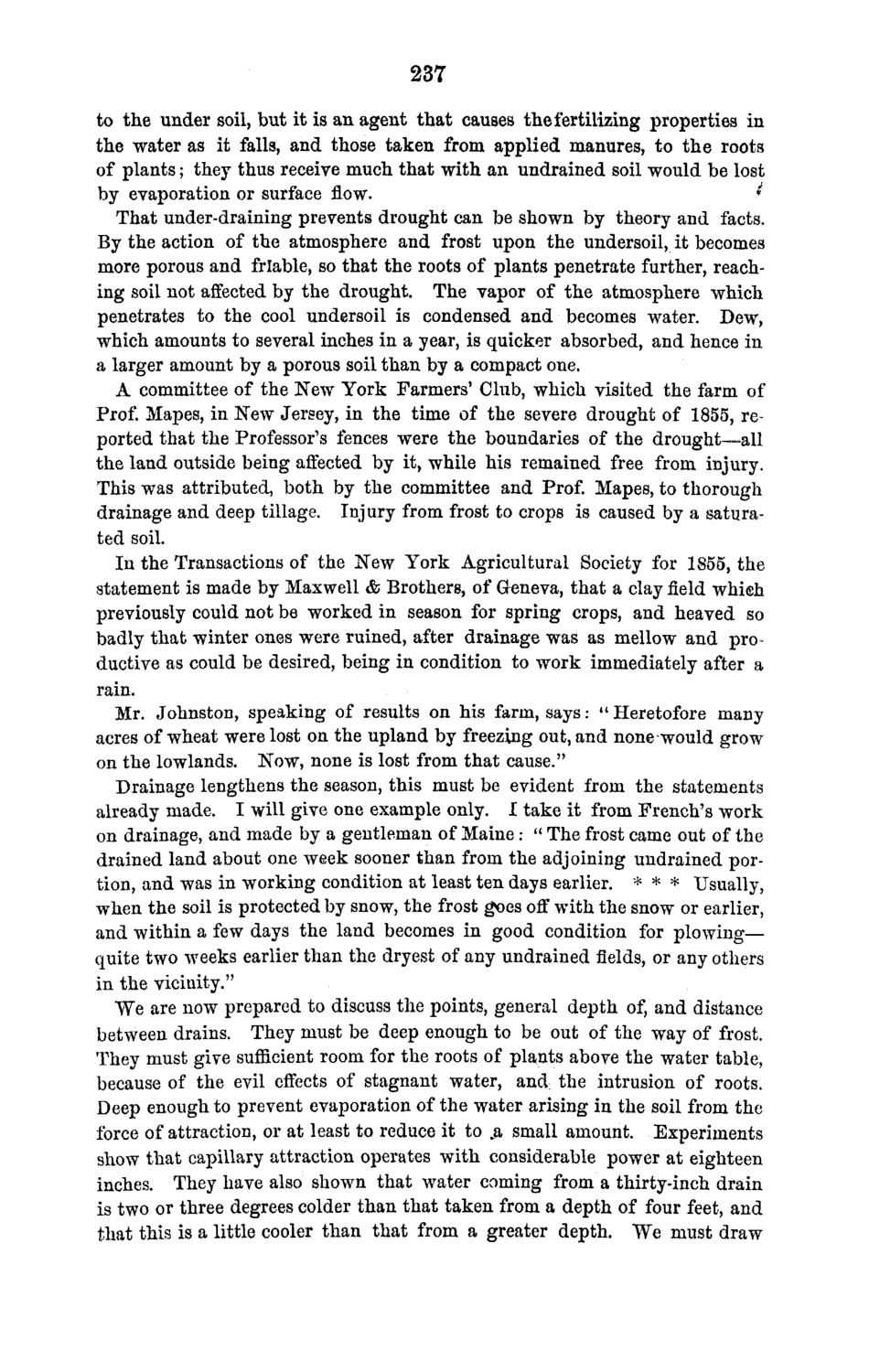| |
| |
Caption: Board of Trustees Minutes - 1870
This is a reduced-resolution page image for fast online browsing.

EXTRACTED TEXT FROM PAGE:
237 to the under soil, but it is an agent that causes the fertilizing properties in the water as it falls, and those taken from applied manures, to the roots of plants; they thus receive much that with an undrained soil would be lost by evaporation or surface flow. * That under-draining prevents drought can be shown by theory and facts. By the action of the atmosphere and frost upon the undersoil, it becomes more porous and friable, so that the roots of plants penetrate further, reaching soil not affected by the drought. The vapor of the atmosphere which penetrates to the cool undersoil is condensed and becomes water. Dew, which amounts to several inches in a year, is quicker absorbed, and hence in a larger amount by a porous soil than by a compact one. A committee of the New York Farmers' Club, which visited the farm of Prof. Mapes, in New Jersey, in the time of the severe drought of 1855, reported that the Professor's fences were the boundaries of the drought—all the land outside being affected by it, while his remained free from injury. This was attributed, both by the committee and Prof. Mapes, to thorough drainage and deep tillage. Injury from frost to crops is caused by a saturated soil. In the Transactions of the New York Agricultural Society for 1855, the statement is made by Maxwell & Brothers, of Geneva, that a clay field whieh previously could not be worked in season for spring crops, and heaved so badly that winter ones were ruined, after drainage was as mellow and productive as could be desired, being in condition to work immediately after a rain. Mr. Johnston, speaking of results on his farm, says: "Heretofore many acres of wheat were lost on the upland by freezing out, and none would grow on the lowlands. Now, none is lost from that cause." Drainage lengthens the season, this must be evident from the statements already made. I will give one example only. I take it from French's work on drainage, and made by a gentleman of Maine: " The frost came out of the drained land about one week sooner than from the adjoining undrained portion, and was in working condition at least ten days earlier. * * * Usually, when the soil is protected by snow, the frost goes off with the snow or earlier, and within a few days the land becomes in good condition for plowing— quite two weeks earlier than the dryest of any undrained fields, or any others in the vicinity." We are now prepared to discuss the points, general depth of, and distance between drains. They must be deep enough to be out of the way of frost. They must give sufficient room for the roots of plants above the water table, because of the evil effects of stagnant water, and the intrusion of roots. Deep enough to prevent evaporation of the water arising in the soil from the force of attraction, or at least to reduce it to .a small amount. Experiments show that capillary attraction operates with considerable power at eighteen inches. They have also shown that water coming from a thirty-inch drain is two or three degrees colder than that taken from a depth of four feet, and that this is a little cooler than that from a greater depth. We must draw
| |